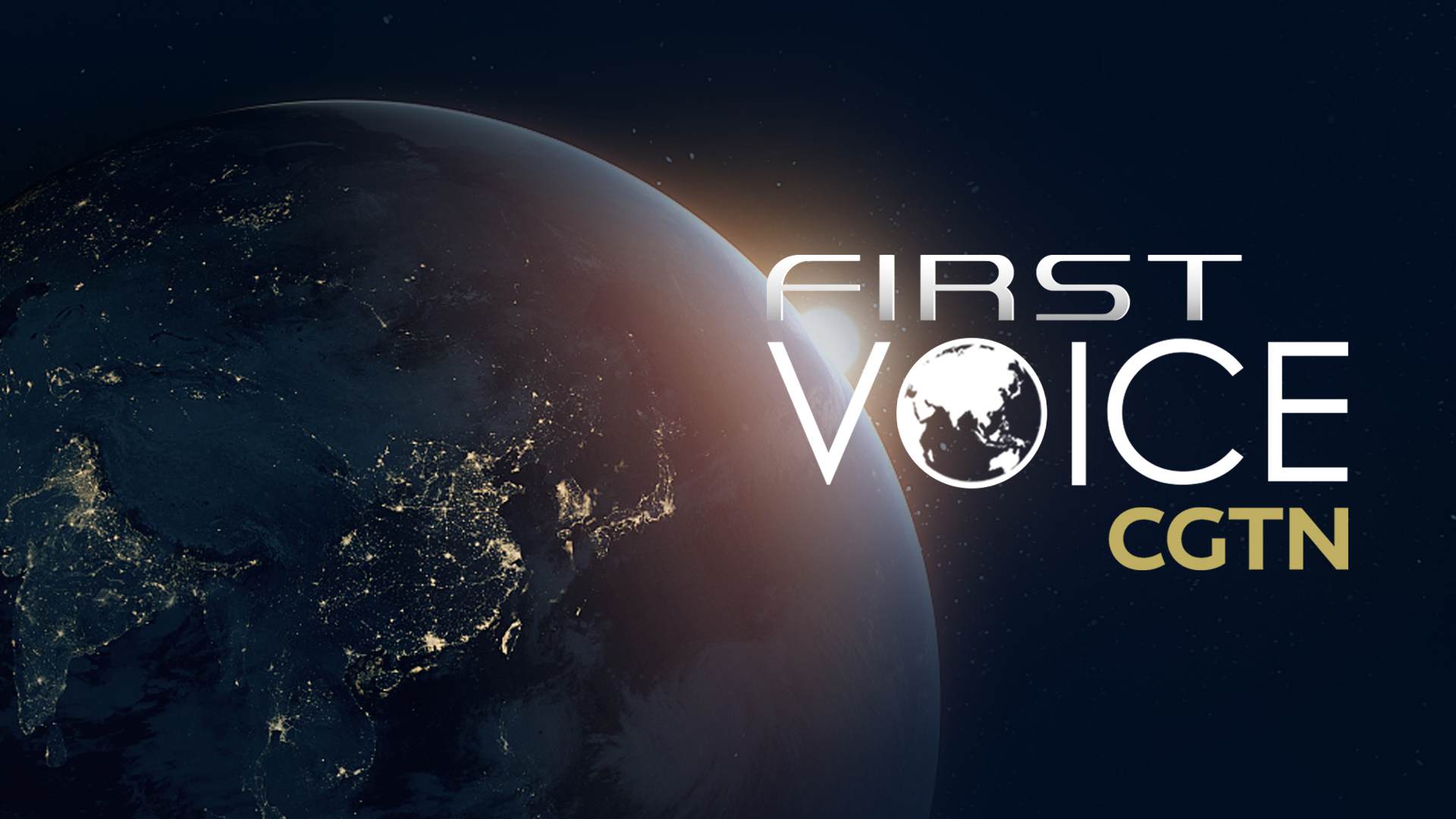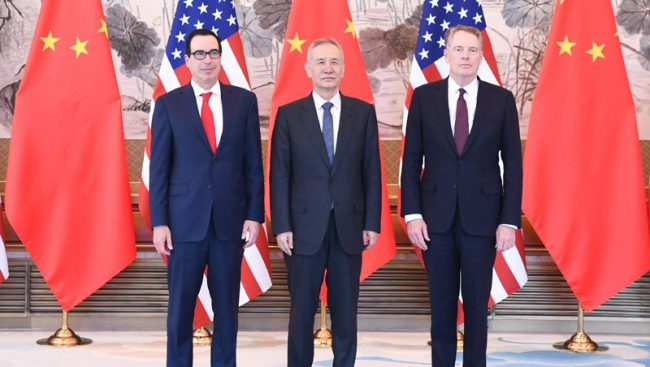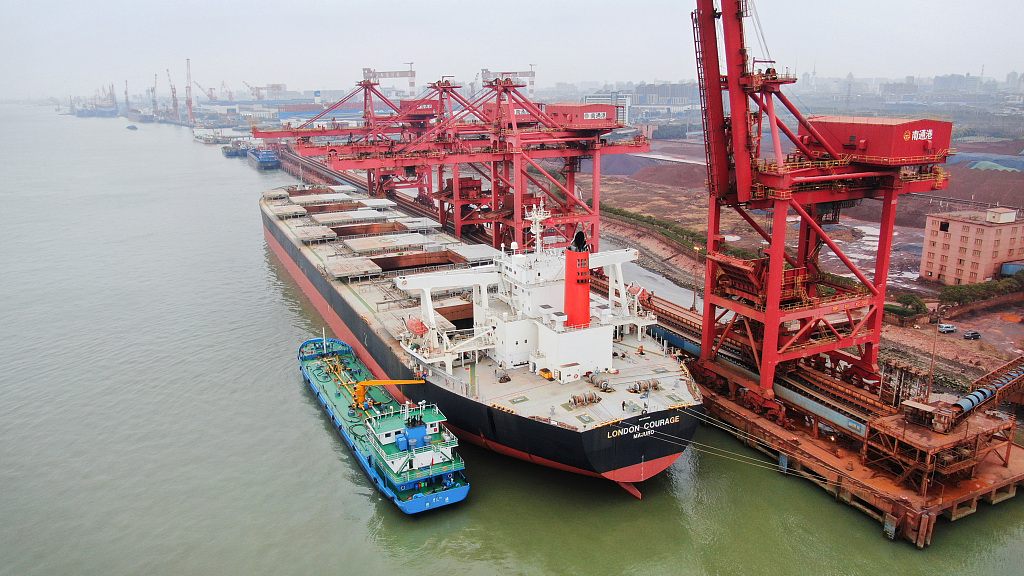
First thought
14:30, 10-May-2019
Is Trump bluffing? We'll soon find out
Chris Hawke

Editor's note: Chris Hawke, a graduate of the Columbia Graduate School of Journalism, has reported for over two decades from Beijing, New York, the United Nations, Tokyo, Bangkok, Islamabad and Kabul for AP, UPI, and CBS. The article reflects the author's views, and not necessarily those of CGTN.
The United States will impose an increase on tariffs on 200 billion U.S. dollars in Chinese products after a round of negotiations in Washington ahead of a midnight deadline failed to break an impasse.
Since the tariffs will only apply to goods leaving port after the deadline, there is still time for Chinese Vice Premier Liu He and chief U.S. trade negotiator Robert Lighthizer and Treasury Secretary Steven Mnuchin to forge a deal before the tariffs come into effect.

China's chief negotiator in the China-U.S. trade talks, Vice Premier Liu He (C), poses with U.S. Trade Representative Robert Lighthizer (R) and Treasury Secretary Steven Mnuchin during the 10th round of negotiations in Beijing, April 30-May 1, 2019. /Xinhua Photo
China's chief negotiator in the China-U.S. trade talks, Vice Premier Liu He (C), poses with U.S. Trade Representative Robert Lighthizer (R) and Treasury Secretary Steven Mnuchin during the 10th round of negotiations in Beijing, April 30-May 1, 2019. /Xinhua Photo
Meanwhile, China will take necessary countermeasures. China says it hopes the two countries can meet each other halfway and make joint efforts to solve the existing problems through cooperation and consultation.
The dramatic nature of the talks grabbed headlines around the globe, guaranteeing that no matter what the outcome, media savvy President Donald Trump will have let Americans know he is taking a tough stance with China, fulfilling a campaign promise.
Trump imposed the latest tariffs after claiming in a tweet that the Chinese tried to renegotiate parts of the trade deal that were already settled. He has threatened to add even more tariffs, putting duties on virtually all goods coming into China.
Trump's bluster risks painting the Chinese side into a corner and forcing them to walk away from a deal rather than appearing to be bullied by the U.S. Due to its history, Chinese are particularly sensitive about appearing to be forced into unequal deals with foreign powers.
If the two sides fail to reach an agreement, Trump will come closer to decoupling the U.S. and Chinese economies – which he claims will bring blue-collar manufacturing jobs back to the United States.
Economists say, however, that this will not happen, and manufacturing will shift to other low-cost countries. In addition, steady advances in automation mean that even if manufacturers choose to set up in the United States, this will not lead to the massive numbers of well-paid jobs for high school graduates of yesteryear.
However, Trump is untethered by reality. He continues to claim that the money generated by tariffs is lifting the U.S. economy. It's true that the tariffs go into U.S. government coffers, but the cost of the tariffs are either borne by U.S. companies or passed on to U.S. consumers.

Nantong Port in Jiangsu Province, China. /VCG Photo
Nantong Port in Jiangsu Province, China. /VCG Photo
For example, a recent study by economists at the Federal Reserve and the University of Chicago found Americans are spending an extra 86 U.S. dollars a year on washing machines, due to recently imposed tariffs. Even worse, the price went up to 92 U.S. dollars for dryers, which are not subject to the tariffs, because the price increase was masked by the rise in the price of dryers. This has led to a total cost to U.S. consumers of 1.5 billion U.S. dollars a year.
Talks will continue in Washington on Friday. Recent history suggests that Trump can talk big on trade but settle for a moderate deal, as has been seen with the new North American free trade deal. The president calls it the United States-Mexico-Canada Agreement, in order to make it seem like he scrapped the old deal, fulfilling another campaign promise, but Canadians call it the new North American Free Trade Agreement (NAFTA).
On the other hand, this president has also shown in other areas of foreign policy that he is willing to do almost anything – except cooperate with others in a multilateral forum.
The former reality show star prefers to put “America First,” grab headlines that will appeal to his electoral base, and attempt Art of the Deal-style negotiating tactics with his country's largest trading partner. We'll find out soon whether this former casino mogul is bluffing or not.
(If you want to contribute and have specific expertise, please contact us at opinions@cgtn.com)

SITEMAP
Copyright © 2018 CGTN. Beijing ICP prepared NO.16065310-3
Copyright © 2018 CGTN. Beijing ICP prepared NO.16065310-3